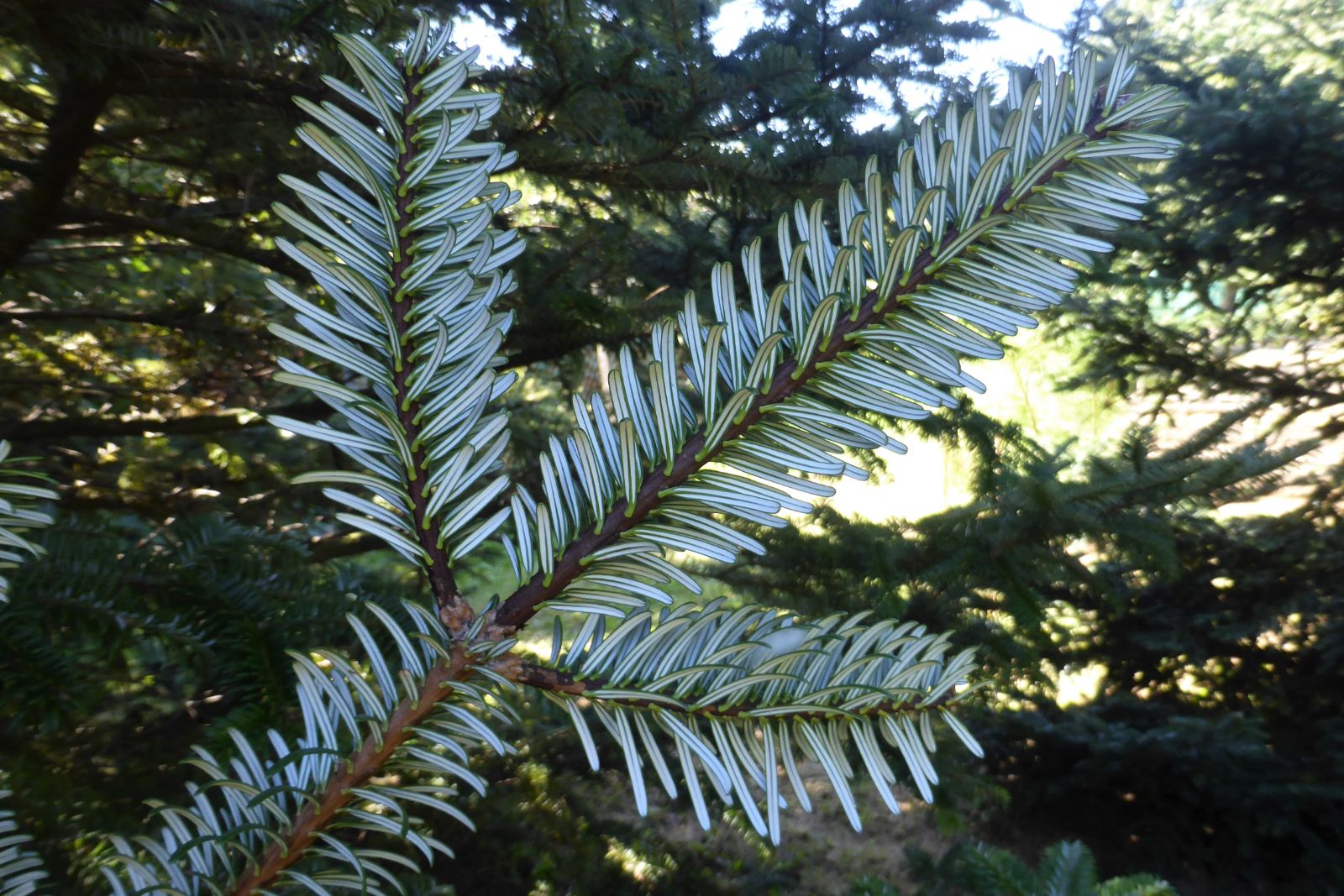Abies fanjingshanensis
Sponsor
Kindly sponsored by
Sir Henry Angest
Credits
Tom Christian (2021)
Recommended citation
Christian, T. (2021), 'Abies fanjingshanensis' from the website Trees and Shrubs Online (treesandshrubsonline.
Genus
Common Names
- Fan Jing Lengshan
- Fanjing Fir
- Guizhou Fir
Synonyms
- Abies fargesii var. fanjingshanensis (W.L. Huang, Y.L. Tu & S.Z. Fang) Silba
Other taxa in genus
- Abies alba
- Abies amabilis
- Abies × arnoldiana
- Abies balsamea
- Abies beshanzuensis
- Abies borisii-regis
- Abies bracteata
- Abies cephalonica
- Abies × chengii
- Abies chensiensis
- Abies cilicica
- Abies colimensis
- Abies concolor
- Abies delavayi
- Abies densa
- Abies durangensis
- Abies ernestii
- Abies fabri
- Abies fansipanensis
- Abies fargesii
- Abies ferreana
- Abies firma
- Abies flinckii
- Abies fordei
- Abies forrestii
- Abies forrestii agg. × homolepis
- Abies fraseri
- Abies gamblei
- Abies georgei
- Abies gracilis
- Abies grandis
- Abies guatemalensis
- Abies hickelii
- Abies holophylla
- Abies homolepis
- Abies in Mexico and Mesoamerica
- Abies in the Sino-Himalaya
- Abies × insignis
- Abies kawakamii
- Abies koreana
- Abies koreana Hybrids
- Abies lasiocarpa
- Abies magnifica
- Abies mariesii
- Abies nebrodensis
- Abies nephrolepis
- Abies nordmanniana
- Abies nukiangensis
- Abies numidica
- Abies pindrow
- Abies pinsapo
- Abies procera
- Abies recurvata
- Abies religiosa
- Abies sachalinensis
- Abies salouenensis
- Abies sibirica
- Abies spectabilis
- Abies squamata
- Abies × umbellata
- Abies veitchii
- Abies vejarii
- Abies × vilmorinii
- Abies yuanbaoshanensis
- Abies ziyuanensis
Trees to ~20 m × <1 m dbh. Crown narrowly pyramidal in young trees, conical-columnar and irregular in old trees. Bark of young trees pale grey-brown and smooth at first, later darkening and finely flaky; in mature trees rough and fissured in the bole, grey, or cinnamon-brown when freshly exposed. First order branches thick, spreading horizontally; second order branches spreading, horizontal or slightly assurgent. Branchlets stout, firm, assurgent or horizontal, matt, very dark purple and weakly ridged in their first year, reddish- or yellowish-brown in their second year, finally grey-brown then grey, glabrous. Vegetative buds ovoid-globular, 5 × 4 mm, slightly resinous. Leaves densely set in several ranks, (1–)1.5–4.3 cm × 2–3 mm, twisted or curved at base, margins flat or nearly so, apex emarginate, pale pruinose green or weakly glaucous-green with a central groove above, with two white or glaucous-white stomatal bands beneath, sometimes partly obscuring the midrib. Pollen cones crowded, axillary, oblong, 1–1.5 cm long, yellow with red microsporophylls. Seed cones short-pedunculate, oval-cylindric or barrel-shaped, apex obtuse, truncate, or umbilicate, (4–)5–7 × 3–4 cm, violet-purple when young, purplish-brown at maturity; seed scales cuneate-reniform, 1.5 × 1.8–2.2 cm at midcone; bracts included or the cusps slightly exserted at maturity, especially near the base. (Farjon 2017; Debreczy & Rácz 2011; Fu, Li & Mill 1999).
Distribution China NE Guizhou (Fanjing Shan)
Habitat Restricted to a single locality in cool-temperate montane forest at 2100–2300 m asl. Scattered in mixed forest or co-dominant with Tsuga chinensis and Acer flabellatum. Woody associates include Taxus chinensis, Rhododendron hypoglaucum, and Enkianthus chinensis.
USDA Hardiness Zone 5-8
RHS Hardiness Rating H6
Conservation status Endangered (EN)
The remarkable dark purple first-year shoots of Abies fanjingshanensis instantly diagnose its affinity with A. fargesii. Even though the two are separated by some 500 km of inapprorpriate habitat it is best thought of as a southern expression of that species; an isolated legacy left behind in the distant past when A. fargesii retreated north in response to a warming climate. Described in 1984, A. fanjingshanensis is nevertheless generally accepted at species rank e.g. Farjon 1990 and 2017; Debreczy & Rácz 2011; Fu, Li & Mill 1999 on account of its disjunct distribution and several points in which it differs, including bark and seed cone characters.
Fanjing Shan is the highest peak of Guizhou province where this fir is endemic, and its small extent of occurrence in a single locality renders an already small population of c. 2500 mature trees at high risk from threats. This, together with an ongoing decline due to acid rain – presumably a result of air pollution – has resulted in the species being categorised as endangered (Yang et al. 2019). A. fanjingshanensis is represented in cultivation by a very small number of specimens. Probably the largest cultivated examples occur in Hungary and descend from an introduction by Zsolt Debreczy and Istvan Rácz. These trees are remarkably uniform and probably clonal; a young graft has recently been accessioned at the Savill Garden, UK (pers. obs. 2020).


